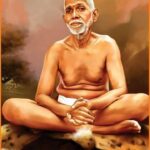Paramahansa Yogananda: The Pioneer of Yoga in the West
Overview: Paramahansa Yogananda Biography
“5 Inspiring Lessons from Paramahansa Yogananda Biography Life and Teachings” Paramahansa Yogananda (1893–1952) was an Indian spiritual teacher who introduced millions in the West to the ancient science of Kriya Yoga. Through his teachings and his seminal book, Autobiography of a Yogi, Yogananda emphasized the unity of all religions and the importance of self-realization. He remains a beacon for spiritual seekers worldwide.
Paramahansa Yogananda Biography
Born on January 5, 1893, in Gorakhpur, Uttar Pradesh, India, Yogananda was named Mukunda Lal Ghosh by his parents. From an early age, he exhibited a deep interest in spirituality, often meditating and seeking the company of saints. In 1910, he met his guru, Swami Sri Yukteswar Giri, a pivotal moment that shaped his spiritual journey.
After graduating from Serampore College in 1915, Yogananda took formal vows as a monk in the Swami Order, adopting the name Yogananda, meaning “bliss through yoga.” His mission was clear: to spread the teachings of yoga and spirituality worldwide.
In 1920, Yogananda traveled to the United States, where he founded the Self-Realization Fellowship (SRF). Over the next three decades, he tirelessly worked to bridge the gap between Eastern spirituality and Western practicality. His teachings, blending scientific methods with ancient wisdom, resonated deeply with audiences across the globe.
Paramahansa Yogananda passed away on March 7, 1952, in Los Angeles, California, during a public event. His legacy continues through the institutions he established and the timeless relevance of his teachings.
Key Teachings: Paramahansa Yogananda Biography
- Kriya Yoga: Yogananda introduced Kriya Yoga as a scientific meditation technique to accelerate spiritual growth and self-realization.
- Unity of Religions: He emphasized the underlying harmony among all religions, promoting a universal approach to spirituality.
- Balance Between Spirit and Matter: Yogananda taught that material success and spiritual progress are not mutually exclusive but complementary.
- Inner Transformation: He advocated for meditation, self-discipline, and devotion to connect with the divine within.
- God-Consciousness: Yogananda emphasized that the ultimate goal of human life is to merge with God-consciousness.
Daily Life Impacts: Paramahansa Yogananda Biography
Yogananda’s teachings offer practical insights for integrating spirituality into daily life:
- Inner Peace: Meditation and Kriya Yoga techniques help individuals attain mental clarity and emotional balance.
- Stress Reduction: His teachings provide tools to cope with life’s challenges while remaining centered.
- Self-Development: Yogananda emphasized the importance of willpower, perseverance, and self-discipline in achieving personal goals.
- Global Perspective: His universal message fosters acceptance and compassion, transcending cultural and religious barriers.
Historical Significance: Paramahansa Yogananda Biography
- Pioneering Role in the West: Yogananda was among the first Indian yogis to establish a lasting spiritual movement in the Western world.
- Autobiography of a Yogi: His autobiography, published in 1946, remains one of the most influential spiritual classics, inspiring millions to explore the path of yoga.
- Promoter of Scientific Spirituality: Yogananda’s emphasis on blending spiritual practice with scientific understanding revolutionized how people perceive yoga and meditation.
Lesser-Known Facts: Paramahansa Yogananda Biography
- Speech at the Boston Congress: In 1920, Yogananda was invited to speak at the International Congress of Religious Liberals in Boston, marking the beginning of his global mission.
- Visionary of World Brotherhood: He established temples and centers for meditation worldwide to promote global unity and brotherhood.
- Physical Immortality: Yogananda’s body showed no signs of decay for weeks after his passing, a phenomenon documented and admired.
- Connection with Mahatma Gandhi: Yogananda taught Kriya Yoga to Mahatma Gandhi in 1935.
Frequently Asked Questions (FAQs)
Q1: What is Kriya Yoga?
Kriya Yoga is a meditation technique that accelerates spiritual growth by harmonizing body, mind, and soul.
Q2: Why is Paramahansa Yogananda’s autobiography so significant?
Autobiography of a Yogi provides profound spiritual insights and recounts Yogananda’s journey, making complex teachings accessible to a global audience.
Q3: What is the Self-Realization Fellowship?
It is an organization founded by Yogananda to disseminate his teachings and guide seekers on the path of self-realization.
Q4: Did Yogananda focus on any specific religion?
No, he emphasized the universality of spiritual truths present in all religions.
Significance of Paramahansa Yogananda
Paramahansa Yogananda’s mission of spiritual awakening transcended borders and religious divides. His teachings encourage individuals to explore their inner potential while fostering harmony in the outer world. His blend of ancient wisdom and modern application continues to inspire personal and societal transformation.
Observance and Celebrations: Paramahansa Yogananda Biography
- Janmotsav (Birth Anniversary): Celebrated on January 5th with meditation, prayers, and spiritual discourses.
- Mahasamadhi Day: Observed on March 7th to honor his spiritual legacy.
Wishing for Yogananda’s Values in Society
In today’s fast-paced world, Yogananda’s emphasis on self-realization, inner peace, and universal brotherhood provides timeless guidance. His teachings remind society of the importance of balancing material pursuits with spiritual aspirations.
Key Points at a Glance: Paramahansa Yogananda Biography
- Born: January 5, 1893, in Gorakhpur, India.
- Philosophy: Kriya Yoga and unity of religions.
- Legacy: Spiritual pioneer who introduced yoga to the West.
- Milestone: Founder of the Self-Realization Fellowship.
- Celebration: Birth and Mahasamadhi anniversaries observed globally.










